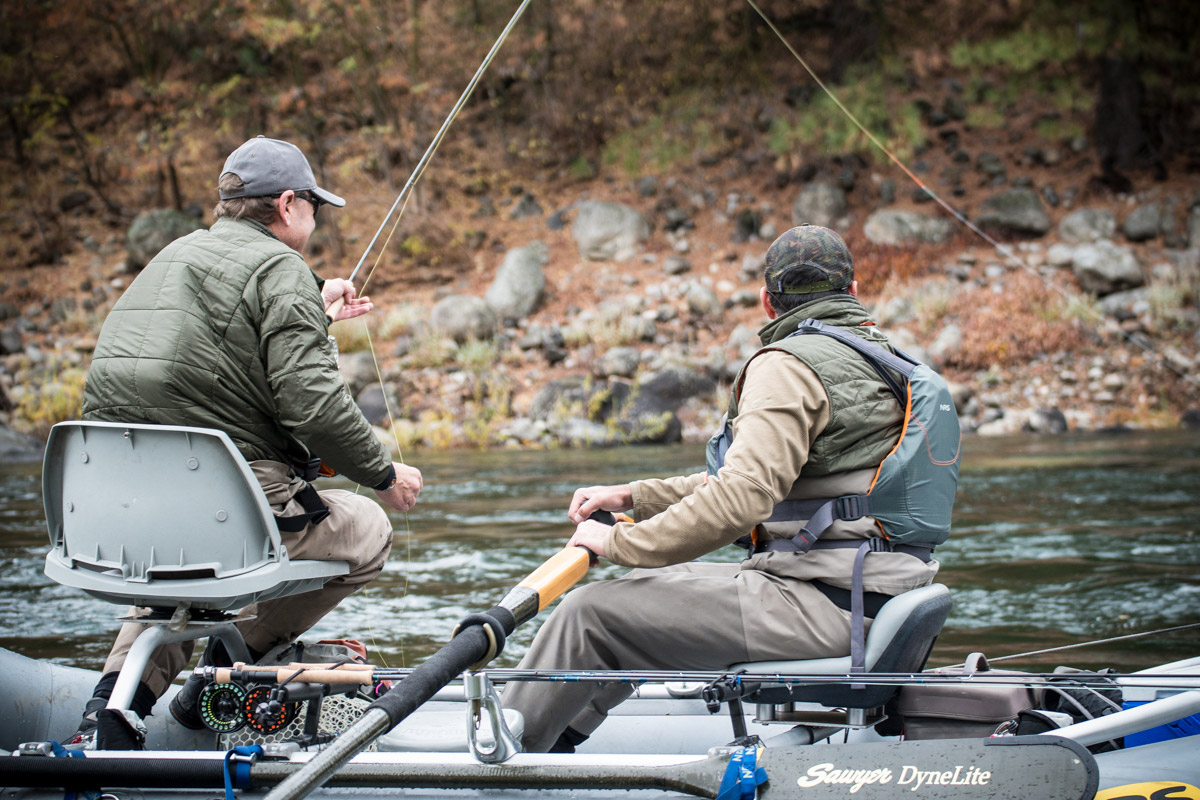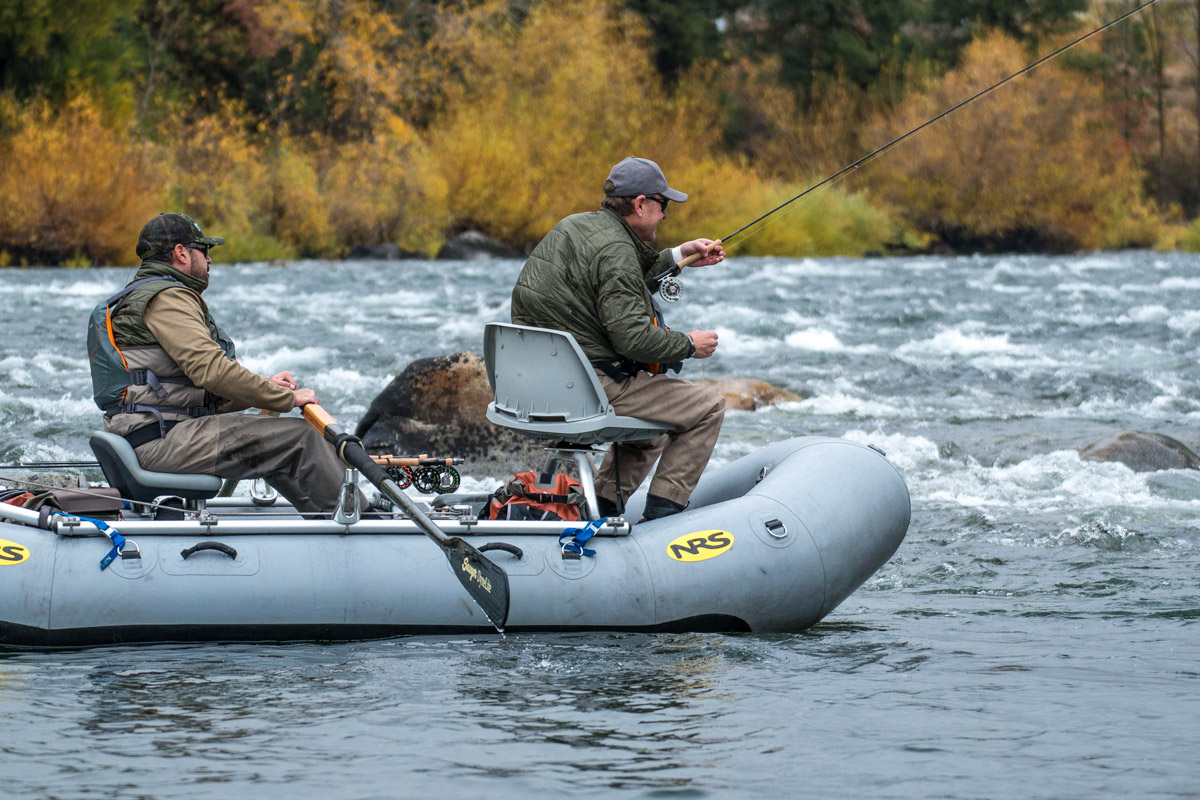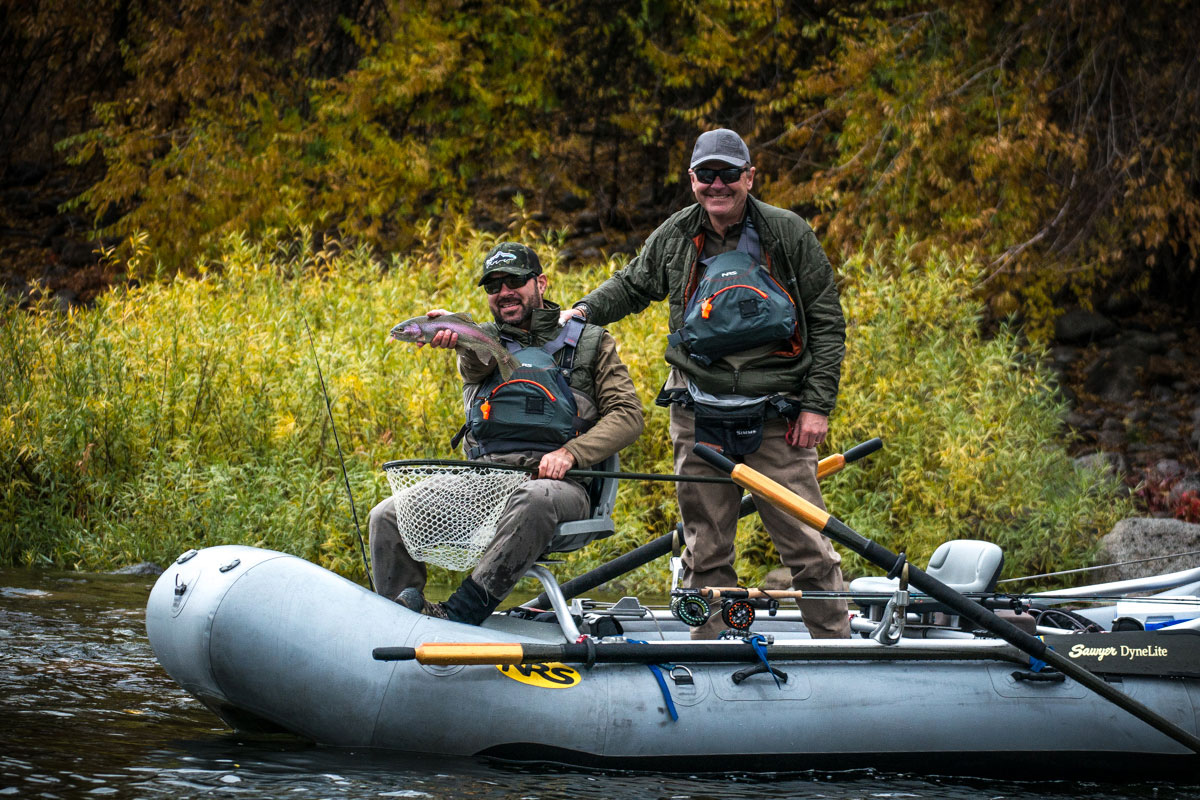Euro Nymphing From A Boat
Sean Visintainer - 10/30/18

10 Pointers to successful drift boat euro nymphing
When I first starting talking about euro nymphing to my fishing buddies this summer the first thing every single one of them asked was... "Can it be done from a boat?!" I said, "Sure, why the heck not?!" They all love to float rivers and so do I so it was a natural question. I have heard about some folks out of Oregon euro nymphing from boats and I believe the guys that did the Modern nymphing videos may do some euro tactics from the boat, but overall it's a relatively little known tactic while drift fishing.
So in my quest to figure out this whole "euro nymphing" thing I decided I better try the tactic from the boat... a lot. My initial findings: very successful. Euro nymphing from the raft or drift boat is highly effective, when done correctly like anything. Now I've only been playing with this tactic on my homewaters, the Spokane River, but I have tried it briefly on the Yellowstone this summer and the Grande Ronde for steelhead, and yes, I did hook a steelhead from the boat while euro nymphing, only to get sawed off on some rocks halfway through the battle so I'll have to play around with that tactic for steelhead more this season.
Note, this article is about floating while euro nymphing, not just in an anchored or stationary position from the boat. We are actually drifting along and euro nymphing on the move with great success.
A few pointers I've learned while euro nymphing from the boat to improve success:
- Lead the drift Unlike indicator fishing where you can lead the boat with your flies, you will need to present your flies either perpendicular from the boat or slightly back upstream is the preference. By slightly leading your flies through the drift you can maintain contact with your flies for better strike detection.
- Steady does it Maintaining a steady rod might be the trickiest thing to do when euro nymphing from the boat especially going through rough water. Once you cast your flies to where you want them, come tight to the leader as quickly as possible. Avoid bouncing the leader after initial impact of your flies when they hit the water, learn to control your arm and rod so when the flies hit you are smooth and avoid jerking the leader / flies around to help the flies sink and stay in the zone.
- Use heavier flies To help maintain steadiness, and combat wind, use a heavier point fly. Bumping up the weight of your dropper can help too. That heavy point fly with help keep your leader straight and keep you connect to the fly incase you can't visually see movement in your leader.
- Be quick to react Just like wade fishing with a euro set-up, strikes can be quick and they can be subtle. Any sort of hesitation in your leader, set the hook. Any sort of potential "bump" you feel while drifting, set the hook. And do it quickly! If nothing is there just pop that fly right back out there and continue on.
- Keep enough leader out of the rod The euro drift can tend to swing back into the boat, especially when not having enough leader out of the rod tip. Extend that leader out, keep your arm and leader up and you will achieve longer drifts.
- Dealing with wind Heavier flies will help. Lower leader angles will help. If you have a strong upstream wind you will have to really lower and lead your flies. The higher and more vertical you lift the rod and leader, the more inflated your leader will be and the harder strikes are to detect. Think of it like a sail. Too windy? Maybe just throw the old indicator on and call it good lol.
- Longer rods will help with distance Just like wade fishing, the longer rods can help carry more line off the water. I tried the new Thomas & Thomas Contact 11'3" 3wt out of the boat and my distance was crazy good, although not as sensitive.
- The angle of dangle Shallow water or riffles? Lower rod / leader angles will keep you fishing the shallow slots. Deeper water, change the angle of the leader to a more vertical position and the flies will sink and drop into the zone. Just like wade fishing.
- Dealing with slow water From what I've seen so far in slow water out of the boat, such as a deep pool, this tactic still works. Your drifts are shorter though as the leader and flies tend to swing back into the boat more. All of this is fine, you just need to recast and cover a different stretch.
- Deep water No problem. I've been running six feet of tippet below my sighter which is great in many situations. If we are drifting along and now we are over deeper water simply bury that leader deeper into the sighter. I find though that once you start to get to 8' deep or so strike detection is substantially harder. Not impossible, just trickier since there is more influence of current on your leader. A heavier fly will help at these depths.
Is this a tactic that everyone should do from the boat when drifting a river? I don't know, you will have to try and see if works for you on your favorite water. Rivers where the fish aren't as spooky, or perhaps have high fish counts and lots of riffles like the Madison in Montana it might slay fish. If you are on river where long casts are critical, probably not the best choice. I am doing this from a sitting position most often in the raft since I have omitted any casting platforms in the boat. Will standing in a drift boat and euro nymphing make it easier or more challenging? We will continue to play around with more and report back to you. From what I've seen so far euro nymphing from a boat is highly effective and worth giving a shot.
Shop Euro Nymphing


